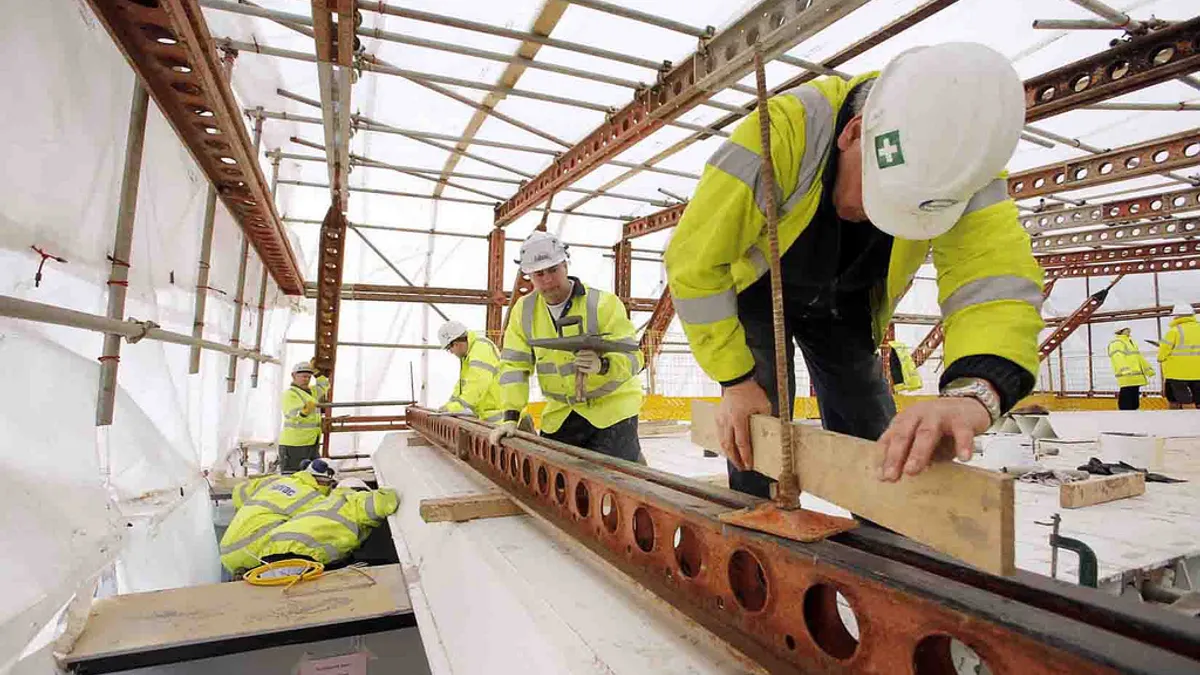Dive Brief:
-
Construction employment growth slowed in July, increasing by 6,000 net new jobs for the month, the Bureau of Labor Statistics reported Friday.
-
The month's total construction employment of 6.899 million represented a 191,000-position — or 2.8% — increase from July 2016.
-
Within the industry, the residential sector fueled July's employment growth, adding 5,100 positions. Nonresidential (including the heavy civil and engineering sectors) lost 800 jobs during the period, while specialty trade contractors across the residential and nonresidential sectors added 1,200 new positions last month.
Dive Insight:
July marks the industry's third-straight month of employment growth and, according to economists, falls in line with the volatile nature of the industry's job market. While nonresidential job growth may have slowed, ABC Chief Economist Anirban Basu noted that the trend recorded for that category could be a statistical outlier. Contractors, Basu said, remain busy — and they could become even busier in the coming months, particularly those in the private sector.
Still, firms continue to grapple with finding enough skilled laborers to add to their payrolls. Overall labor force participation inched up slightly this month, though it has held steady over the course of the past year.
Meanwhile, construction spending figures confirm that construction companies are busy. Construction spending dipped 1.3% from May to a seasonally adjusted annual rate of $1.205 trillion in June. The figure was up 1.6% year-over-year.
Both spending and demand for design services still stand to get a boost from the Trump administration's proposed $1 trillion infrastructure plan. So far, however, those details have been few and far between and recent reports point to the plan being shelved until some time next year.
Residential builders continue to face challenges from lot and labor shortages. While housing starts bounced back in June, homebuilder confidence continues to waver. Builders are becoming increasingly troubled with rising material prices — especially lumber, according to the National Association of Home Builders. More still, growing frustration with their struggle to find skilled workers and available lots has been a drag on optimism as they struggle to keep pace with demand.














